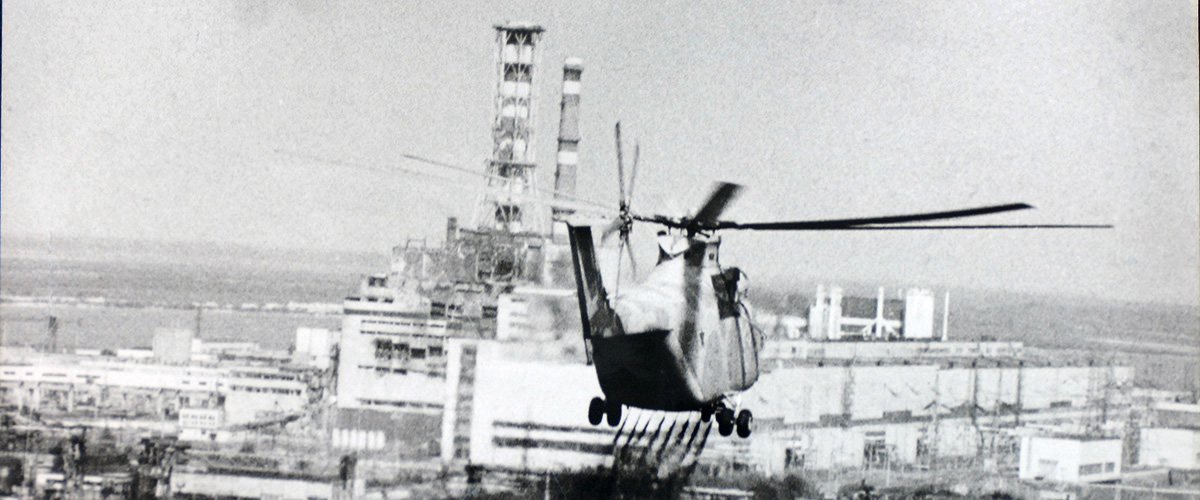
On the morning of 28 April, workers coming to the job at the Forsmark Nuclear Power Plant in Sweden, registered high level of radiation detected on their bodies. The levels were not high enough to harm humans but the plant was shutdown for investigations.

Meanwhile, similar reports came in from all over Scandinavia, despite no accidents being reported. This lead to the conclusion that the problem was elsewhere, a fact confirmed on Soviet television that night, in a 20 second announcement: “There has been an accident at the Chernobyl Nuclear Power Plant. One of the nuclear reactors was damaged. The effects of the accident are being remedied. Assistance has been provided for any affected people. An investigative commission has been set up.”

The city of Pripyat, located in the immediat vicinity of the plant was not immediatelly evacuated. Unknowing of that has happened, the townspeople went about this regular duties. However, within a few hours of the explosion, several people fell ill. Later, they reported severe headaches and metallic tastes in their mouths, along with uncontrollable fits of coughing and vomiting. These were the first signs of severe radiation poisoning. During the early hours of April 26, a late night safety test simulating a station power-failure was responsible for the safety systems being shut down. Improper test procedure combined with some reactor design flaws, resulted in immediate uncontrolled reaction conditions, that caused a steam explosion and subsequent graphite fire.

The explosion and the following fires lofted fission products into the atmosphere for several days. This produced contamination over large parts of the Soviet Union, now the territories of Belarus, Ukraine and Russia. According to official reports, thirty-one people died immediately and 600,000 “liquidators” involved in fire-fighting and clean-up operations, were exposed to high doses of radiation. People were used as the robotic vehicles could not handle the large doses of radiation. Liquidators worked under deplorable conditions, poorly informed and with poor protection. Many, if not most of them, exceeded radiation safety limits in many, in some cases by several orders of magnitude leading to rapid death.

After the nuclear fires were finally controlled, workers scrambled to contain the invisible dangers of the failed Chernobyl core. The concrete beneath the reactor was steaming hot, and was breached by solidified lava and spectacular unknown crystalline forms termed “chernobylites”. With the help of a remote camera, an intensely radioactive mass was found in the basement of Unit 4, more than two meters wide and weighing hundreds of tons, which they called “the Elephant’s Foot” for its bulky appearance. It was a solid mass made of melted nuclear fuel mixed with concrete, sand, and core sealing material that the fuel had melted through.

Based on the official reports, nearly 8,400,000 people in Belarus, Russia and Ukraine were exposed to the radiation, which is more than the population of Austria. About 155,000 sq. km of territories in the three countries were contaminated, which is almost half of the total territory of Italy. Agricultural areas covering nearly 52,000 sq. km, which is more than the size of Denmark, were contaminated with cesium-137 and strontium-90, with 30-year and 28-year half-lives respectively. Nearly 404,000 people were resettled, but millions continued to live in an environment where continued residual exposure created a range of adverse effects.
The Chernobyl accident is considered the most disastrous nuclear power plant accident in history, both in terms of cost and casualties, classified as maximum on the International Nuclear Event Scale, the only other being the Fukushima Daiichi nuclear disaster in Japan in 2011. Today we’re commemorating 32 years since this regretable incident. The uRADMonitor map was set to “Radiation View” as default view today.
Thank you for the informative article on Chernobyl, And, Thanks So Much for setting the map to radiation view!
Thank you Pia, I’m glad you like that!